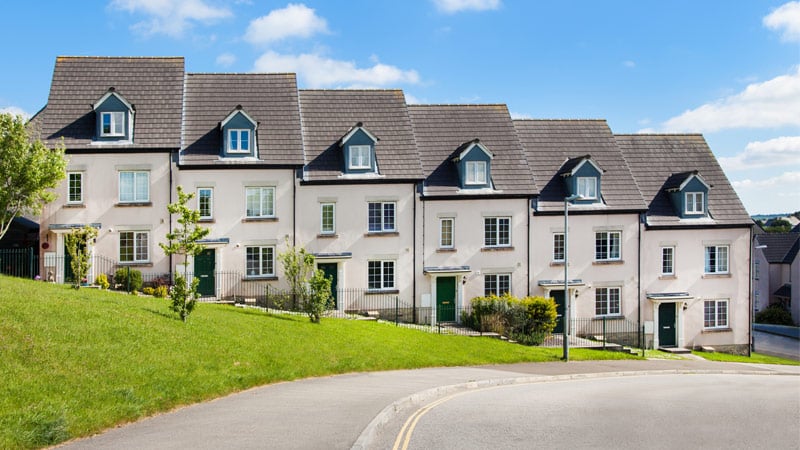Nationwide predicted a 1% increase in prices for 2018 as a whole, behind the likely rate of inflation.

Annual house price growth slowed to 2.4% in May after prices fell by 0.2% month-on-month, the Nationwide House Price Index showed.
Nationwide predicted a 1% increase in prices for 2018 as a whole, behind the likely rate of inflation.
Robert Gardner, Nationwide's chief economist, said: “Annual house price growth has been confined to a fairly narrow range of c2-3% over the past 12 months, suggesting little change in the balance between demand and supply in the market over that period.
“There are few signs of an imminent change. Surveyors continue to report subdued levels of new buyer enquiries, while the supply of properties on the market remains more of a trickle than a torrent.
“Looking further ahead, much will depend on how broader economic conditions evolve, especially in the labour market, but also with respect to interest rates.
“Subdued economic activity and ongoing pressure on household budgets is likely to continue to exert a modest drag on housing market activity and house price growth this year, though borrowing costs are likely to remain low.”
The most rapid period of growth in the private rental sector has been over the last 10 years, where the number of privately rented dwellings increased by 50%. Meanwhile over the same period, the number of owner occupied dwellings was broadly unchanged at 15.1 million, while social sector (local authority plus housing association) dwellings increased by 2%.
There’s been an increase in the proportion of flats, which are popular with investors (about 60% of flats are privately rented compared with 18% of other property types in the privately-owned stock). Since 1996, flats have increased from 12.2% to 15.6% of the privately-owned stock.
While construction has shifted back towards houses in recent years, flats still accounted for about 20% of new units last year, above their share of the stock.
Since 1996, the proportion of rented flats within the stock has increased from 4.9% to 9.2% of private dwellings (equivalent to one million additional units).
Jeremy Leaf, north London estate agent and a former RICS residential chairman, said: “Once again, we are seeing few signs of major change in the market after the last few months of up a bit, down a bit - and May is no different.
“On the ground we are seeing much the same - more interest in an increased number of properties coming onto the market which we would expect at this time of the year but still hard to generate commitment from buyers and transactions agreed taking longer to finalise.
“Looking forward we do expect a little more activity in what is generally the peak time of the year for buying and selling. But once again it is the realistic who are proving the most successful.
“Recent tax and regulatory changes have meant that the playing field between buy-to-let investors and first-time buyers is levelling but to date ding criteria and deposit-raising difficulties are preventing many first-time buyers taking their place in sufficient numbers to make a real difference, despite stamp duty abolition.”
There has also been a substantial increase in both the number and proportion of privately rented terraced houses, which now represent 8.9% of the stock.
Over the same period, the number of owner occupied terraces has actually fallen, suggesting some of these properties transferred across to the rental sector.
The property type which has become much less prevalent is bungalows, which now make up 8.6% of the stock, down from 10.7% in 1996. This may be unexpected, given demographic trends and the popularity of this type of property amongst older people.



